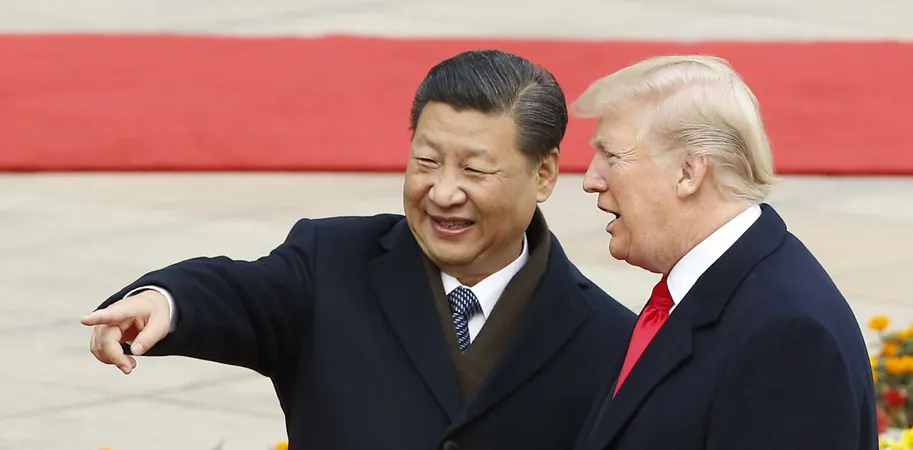
The China-Us Trade Face-Off: Why Beijing May Have the Upper Hand
2025-04-11
Author: William
Trump's Tariff Strategy Targets China in a Global Trade War
When Donald Trump rolled back his plans for punishing tariffs against various global trade partners, one nation remained in the crosshairs: China. On April 9, 2025, Trump intensified the pressure by hiking tariffs on Chinese imports to a staggering 125%, claiming it was due to China's 'disrespect' for international markets.
Unlike other countries that opted for dialogue and negotiation in response to Trump's tariffs, China hit back hard, branding his efforts as a mere 'joke' and mirroring his tariff hike.
China's Calculated Move: Adapting to Economic Shifts
While Trump's tariffs could deliver a significant blow to China's export-driven economy, especially affecting coastal manufacturers, recent economic shifts suggest Beijing is more resilient than ever.
Since the onset of the trade war in 2018, the U.S. has drastically reduced its importance as a trading partner, with exports to the U.S. dropping from 19.8% of China's total exports to just 12.8% by 2023. This decline has pushed China to focus on boosting its domestic demand, aiming to fortify its economic foundations.
Leverage and Resilience Amidst Turbulence
China's current economy, challenged by sluggish growth and external pressures, has paradoxically become more robust as businesses adapt to existing hardships. Trump's tariffs offer Beijing a convenient scapegoat for domestic economic issues, allowing the government to unify public sentiment against U.S. aggression.
Moreover, the U.S. still relies heavily on Chinese goods, especially in critical supply chains. As of 2022, American imports from China constituted 532 key product categories, nearly quadruple that of 2000. In contrast, China has halved its reliance on U.S. products during the same period.
Potential Retaliation: A Trove of Strategic Options
China wields significant tools for retaliation, controlling a whopping 72% of the U.S. rare earth supply chain, essential for both military and technology sectors. Recent actions included placing American entities on an export control list, targeting core industries.
Furthermore, crucial sectors like agriculture, especially soybeans and poultry, are highly vulnerable. China accounts for about half of U.S. soybean exports, a bargaining chip it has already begun to leverage.









 Brasil (PT)
Brasil (PT)
 Canada (EN)
Canada (EN)
 Chile (ES)
Chile (ES)
 Česko (CS)
Česko (CS)
 대한민국 (KO)
대한민국 (KO)
 España (ES)
España (ES)
 France (FR)
France (FR)
 Hong Kong (EN)
Hong Kong (EN)
 Italia (IT)
Italia (IT)
 日本 (JA)
日本 (JA)
 Magyarország (HU)
Magyarország (HU)
 Norge (NO)
Norge (NO)
 Polska (PL)
Polska (PL)
 Schweiz (DE)
Schweiz (DE)
 Singapore (EN)
Singapore (EN)
 Sverige (SV)
Sverige (SV)
 Suomi (FI)
Suomi (FI)
 Türkiye (TR)
Türkiye (TR)
 الإمارات العربية المتحدة (AR)
الإمارات العربية المتحدة (AR)